Following up recent reports of autumn-flowering snowdrops in the catchment of the Bistrica River in south-west Albania, I spent a few days there in late November and early December and found that, exactly as reported, Galanthus reginae-olgae was still in full flower. Although well past their peak, these populations were apparently later than those in Corfu, which was clearly visible on the horizon from the higher parts of the valley.

On Corfu, snowdrops occurred in a rather wide variety of habitats, from olive groves, to old secondary woodland, to subalpine grassland. In the Bistrica catchment, in contrast, they grew only (so far as I could tell), in natural or semi-natural woodland, mainly on north-facing banks near the river and its tributary streams. The trees were dominated by a mixture of deciduous oaks, Ostrya carpinifolia and a few (but not many) plane trees. In the understory the commonest components were Ruscus aculeatus, ivy, Cyclamen hederifolium and the emerging foliage of Arum italicum, some with splendid leaf patterns.
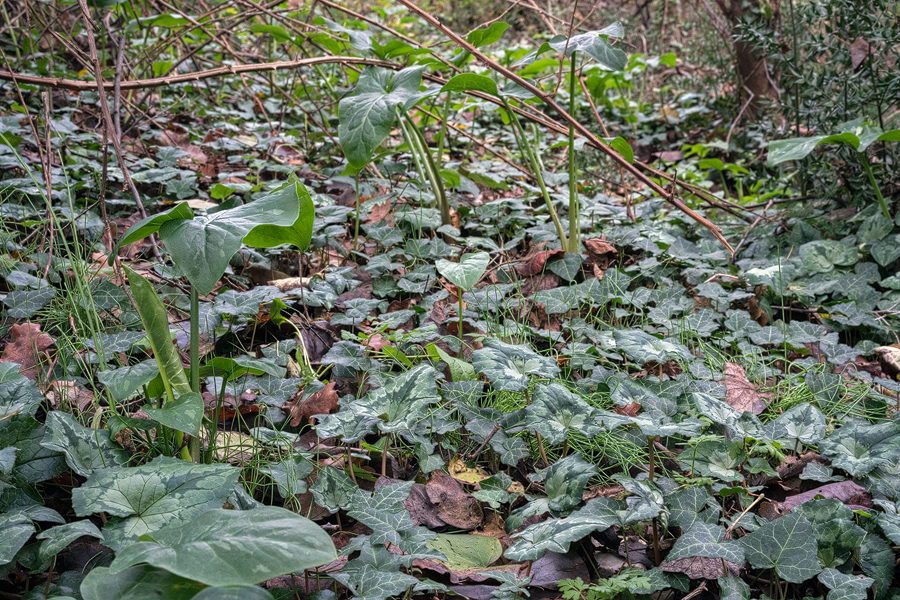
As with other populations of Galanthus reginae-olgae that I have studied this autumn, these snowdrops were highly variable, though mutants of the sort that tend to excite galanthophiles were noticeably less frequent in the Albanian populations.
Most plants occurred as singles or small clumps of two or three bulbs. Larger clumps were distinctly uncommon.
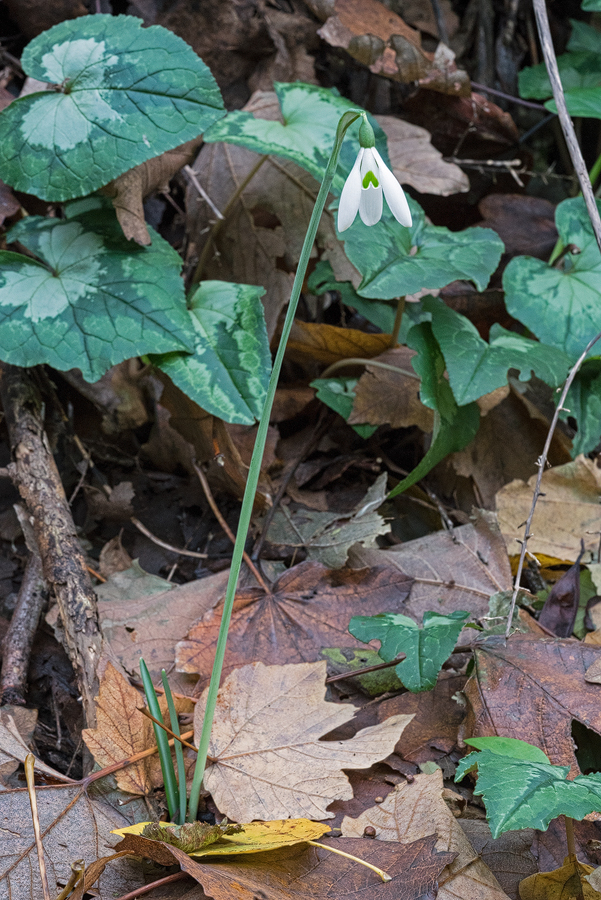
In almost all cases leaves were emerging simultaneously with the flowers though they were only really well-developed in plants that had already finished flowering. A clear, striking pale median stripe was visible on the upper surface of the leaves.
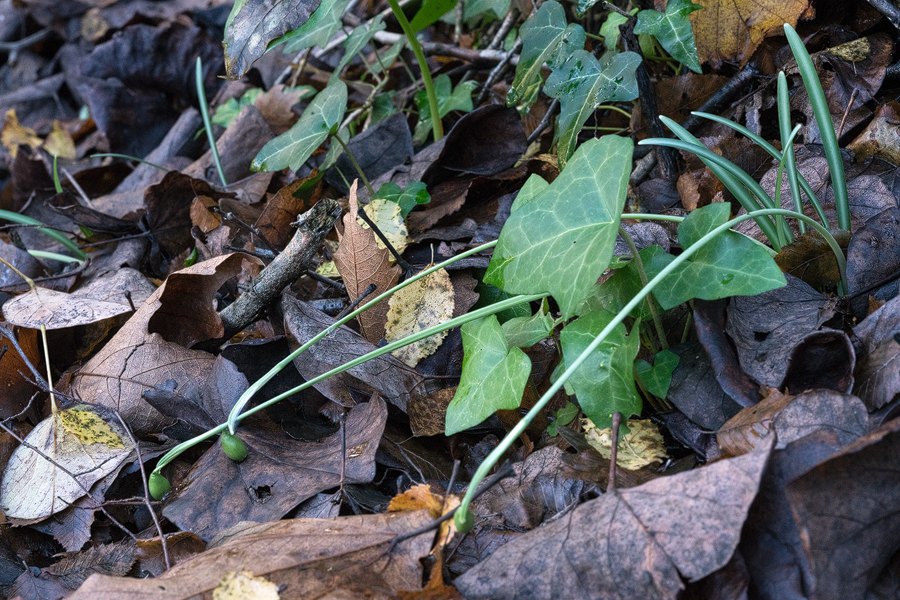
The shape of the flowers, which I have come to recognise over the last two months as quite characteristic of this species, was typically like a rather elegant, elongated light bulb, which results from the rather long claws and the bowed, rather narrow outer segments. In some cases, a combination of long claws and narrow inner segments created a small gap near the base of the flower, even when the flower was completely closed. Of course there were many exceptions to this general description, but they tended to prove the rule.
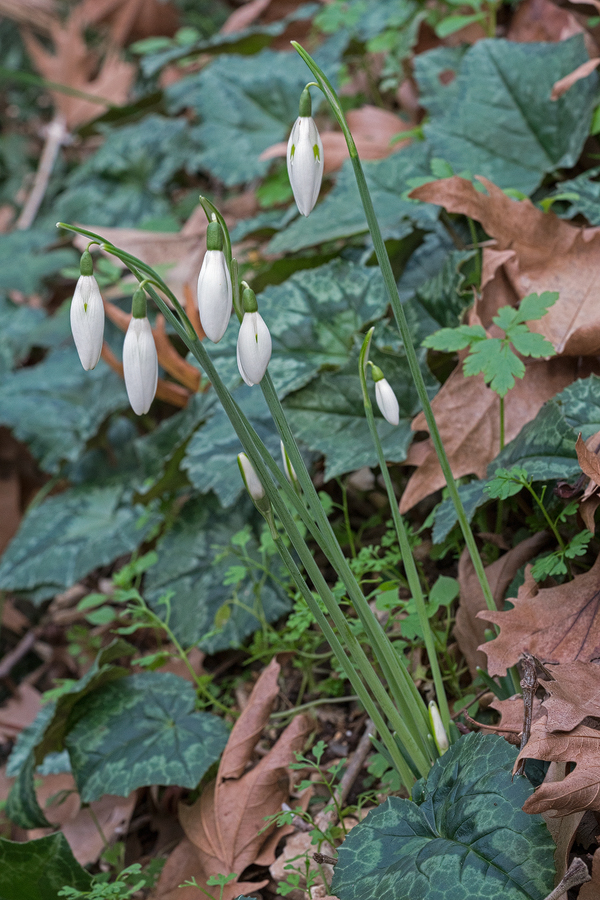
The green mark on the inner segments was variably shaped as an inverted V or U, generally confined to the apical third of the segment and rarely reduced to two green spots either side of the relatively large sinus. Compared with populations of the same species in Corfu, the inner segment mark was typically smaller and, compared with plants in the Taygetos, typically larger. As always, however, this feature was highly variable.
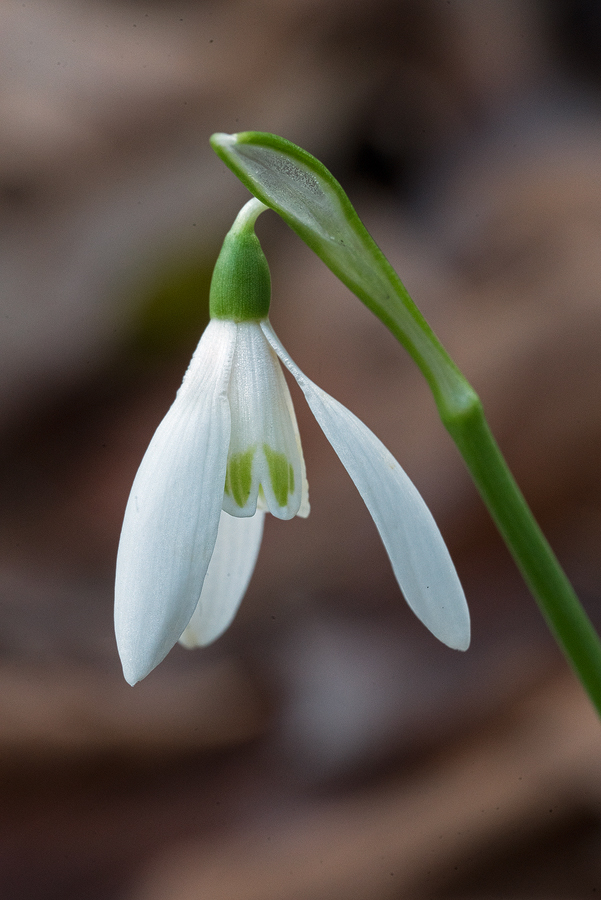
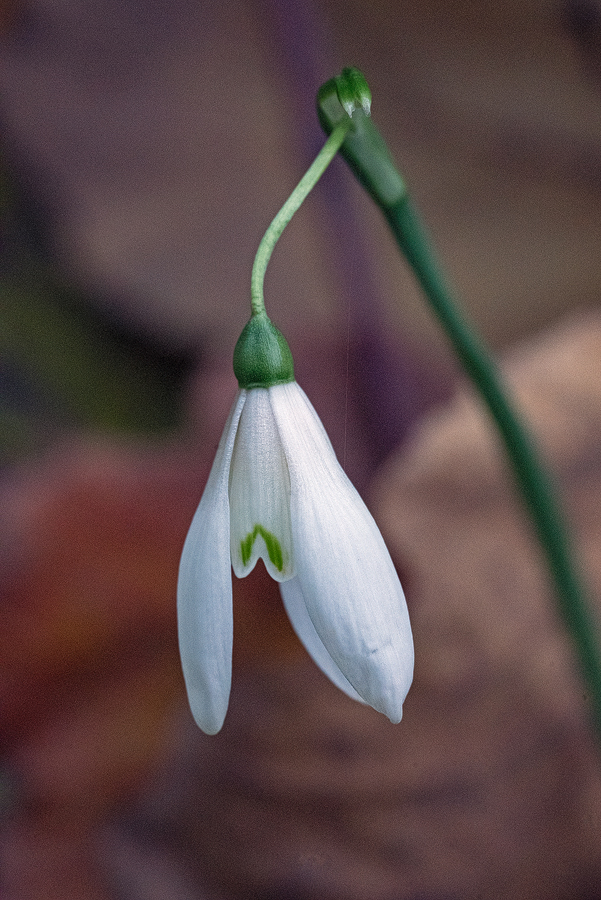
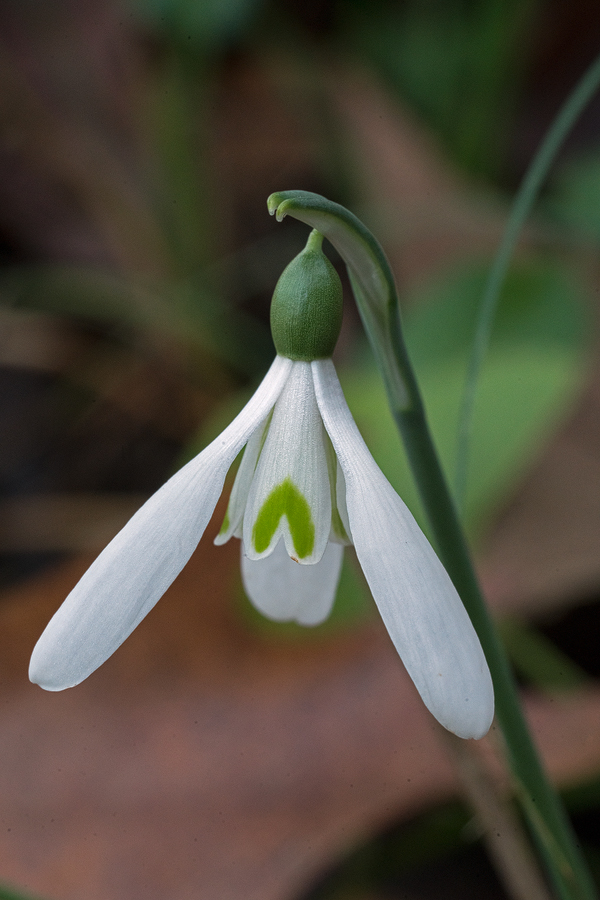
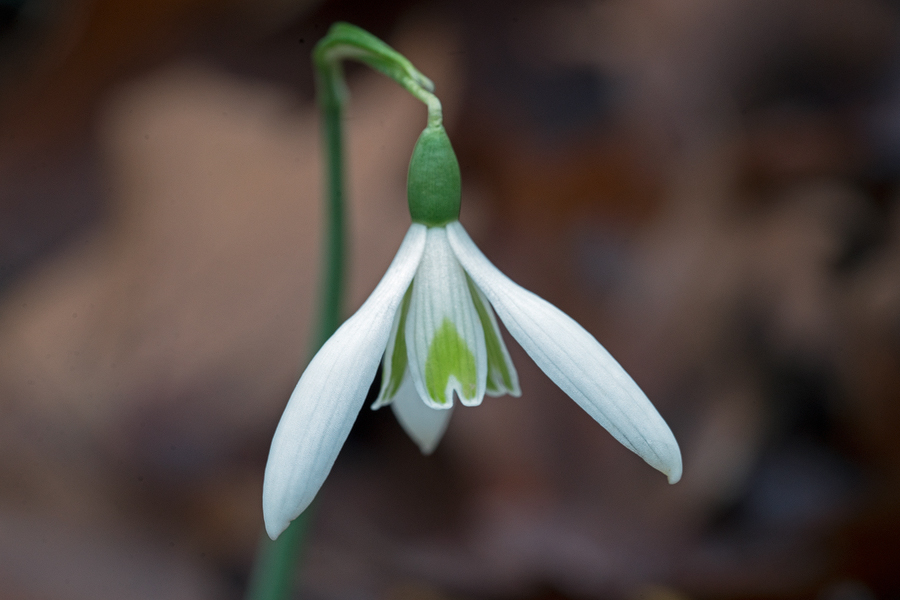
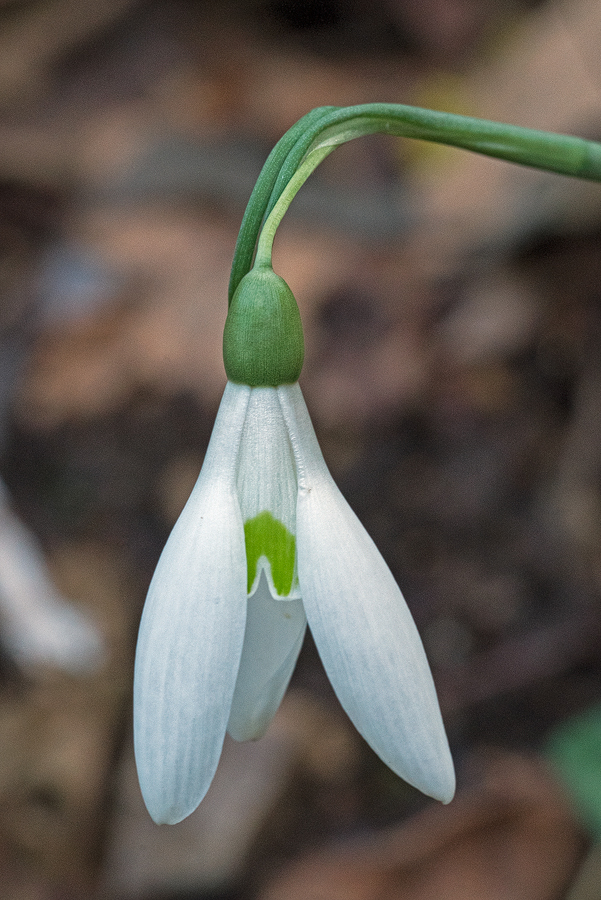
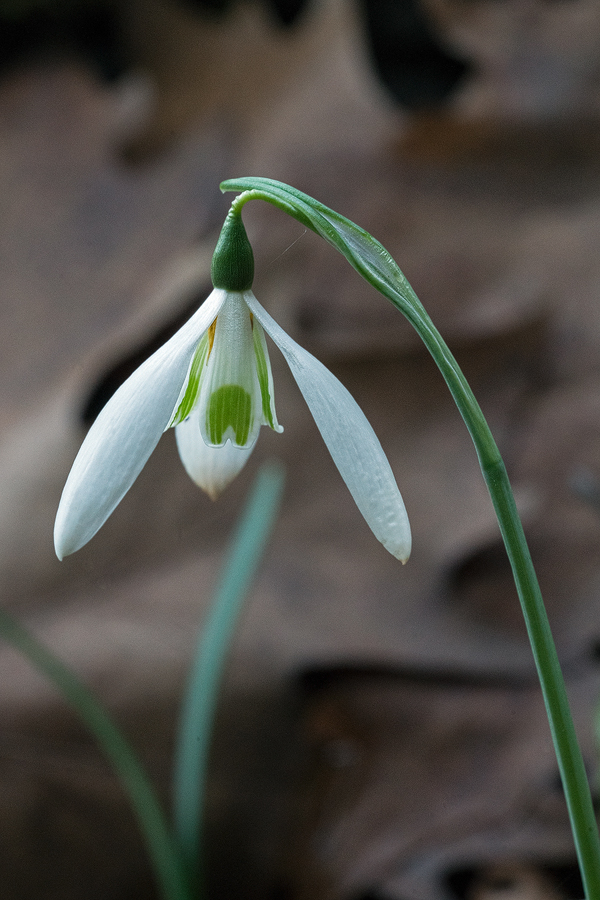
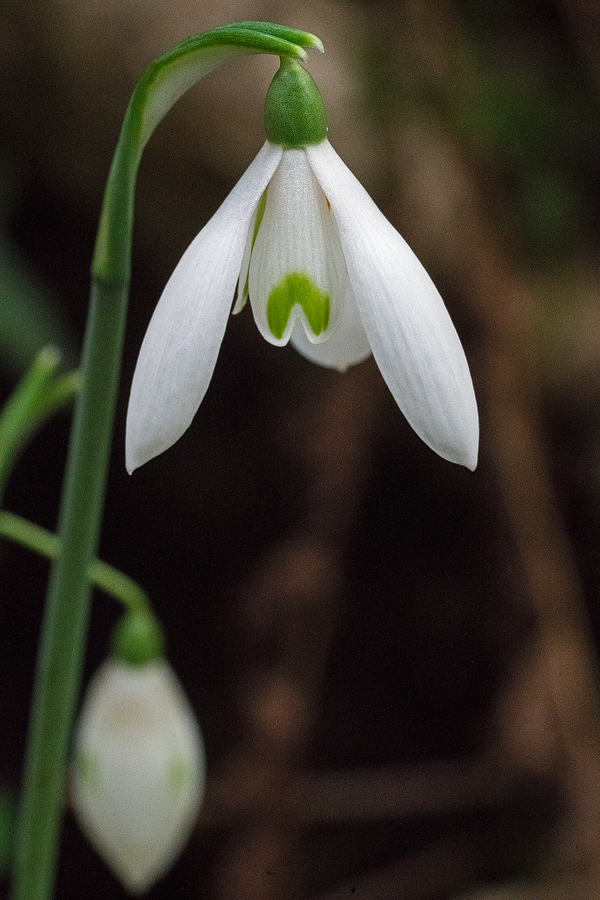
Populations of Galanthus reginae-olgae across the species’ wide range in the Balkans (it occurs from the the northern end of the Mani peninsula in southern Greece to Mostar in Bosnia Hercegovina) adopt various strategies for reproducing, timing their flowering to suit local weather conditions and pollinators. Some flower in late autumn or early winter, while a few insects are still about and there is little competition for pollinators. The leaves then grow slowly through the winter and seed is ripe by mid spring. Other populations start to flower only in late winter or early spring, sometimes not until the snow melts, employing the services of early-flying insects and competing with other spring bulbs. In these cases the leaves emerge and grow quickly with the flowers, having to complete their growth cycle before summer comes, bringing with it drought.
Human beings love to classify things into discrete categories even when, in reality, no neat boundaries between adjacent types exist. The first Galanthus reginae-olgae of the autumn start to flower in the Taygetos Mountains of the Peloponnese and in Corfu in mid-October and continue until late November, at least. In Albania, across the narrow strait separating it from Corfu, they are still in full flower in early December and, judging by the state in which I saw them there last week, will continue to flower until at least the middle of the month. By mid December the same species is beginning to flower around Trebinje in Bosnia-Hercegovina and (as I know from many previous visits) it will continue to flower at higher elevations in Bosnia, Croatia and Montenegro until late March.
Much taxonomic significance has been placed on the state of development of the leaves at flowering time, with autumn-flowering populations supposedly flowering before the leaves start to emerge and spring-flowering populations flowering simultaneously with the emergence of the leaves. But again, there is continuous variation between populations that flower almost entirely before the leaves emerge (notably in the Taygetos Mountains), those where the leaves have often emerged by at least a few centimetres at flowering time (e.g. in Corfu and Albania) and those where the leaves and flowers appear simultaneously (e.g. in Bosnia-Hercegovina, especially at higher elevations).
There is a genuine difference between populations that occur at elevations where there is typically snow cover in winter and those that grow below the typical lower limit of snow. In the latter case there appears to be a complicated but generally negative correlation between elevation and flowering time. Higher elevation populations and those in colder sites flower earlier than lower elevation populations, other things being equal, presumably being triggered into flower by falling temperatures and/or rainfall. In the former case, in contrast, higher elevation populations flower later, as they cannot commence growth before the snow has melted. Clearly there is no gene exchange between plants that flower in October and those that flower in March and it is perfectly reasonable to think of Galanthus reginae-olgae as a species in the slow process of fragmenting into related species, isolated from one another by phenology as much as geography.
